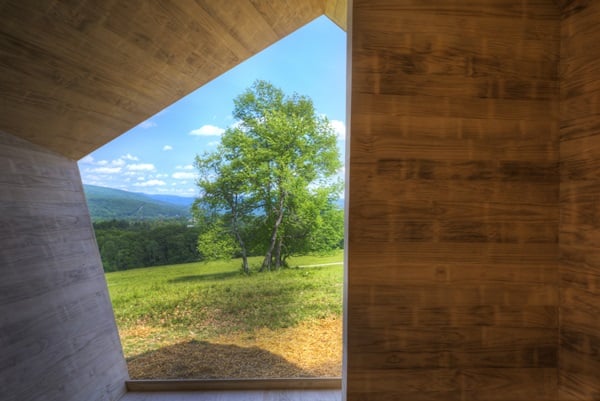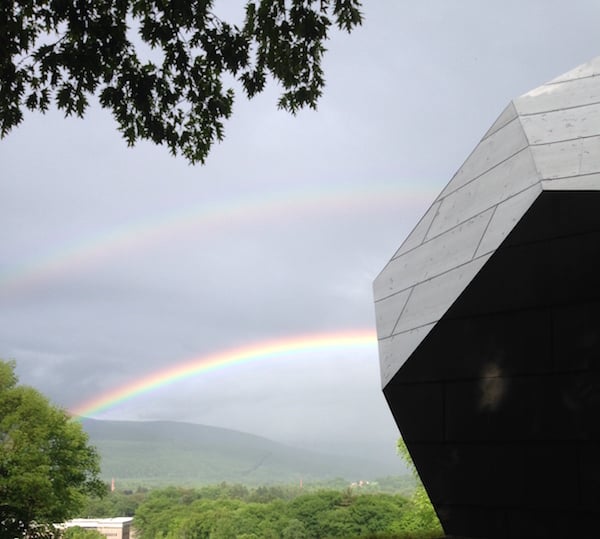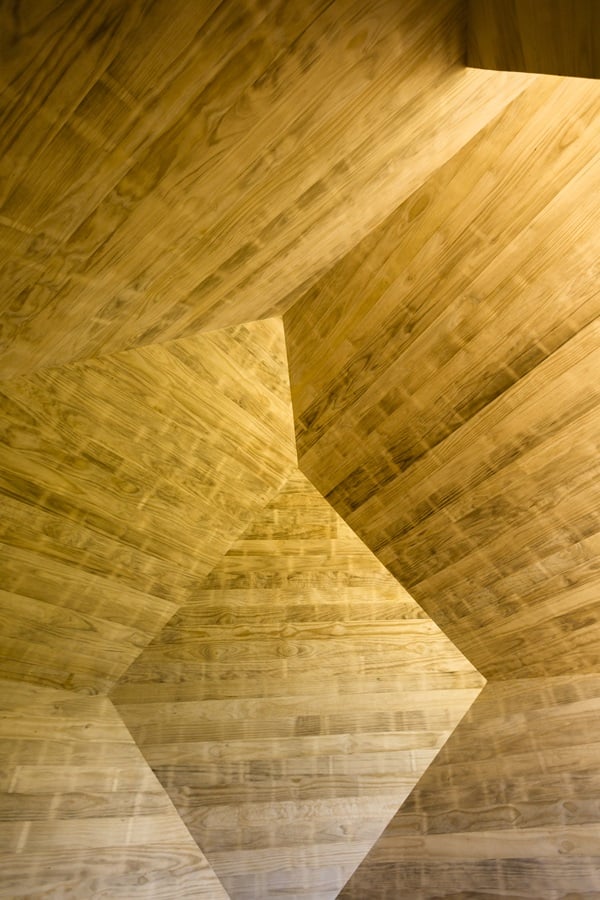Art & Exhibitions
Thomas Schütte’s First U.S. Architectural Commission Is A Not-to-Be-Missed Gem
An irregular pentagon frames fantastic views.

Photo; Clark Institute.
An irregular pentagon frames fantastic views.

Brian Boucher


Thomas Schütte, Crystal, 2015.
Photo Jeremy Broadwell.
I didn’t know what was in store for me when I hiked up the hill behind the Clark Art Institute, in Williamstown, Massachusetts, on Friday.
What greeted me was a fantastic brand-new sculpture by German artist Thomas Schütte that expertly frames a view of the gorgeous landscape behind the museum. It comes into view from behind a stand of trees as you ascend a hiking path behind the Institute, which commissioned the work.
Schütte’s room-size sculpture is his first architectural commission in the U.S. Visitors enter through a pair of doors on the sculpture’s north side into a starkly angled wooden interior made from Southern yellow pine.
The southeast side of the structure is open; an irregular pentagonal shape frames a view of six wild cherry and ash trees in the near distance and the Hoosac mountain range in the distance. Cows graze nearby, and, according to a museum employee, have taken quite an interest in the sculpture.

Thomas Schutte.
Photo: Clark Institute.
There’s not a right angle in sight. The 10 exterior facets are clad in copper, and the shape is based on that of a crystal.
Schütte has done a number of such structures before, but all on private estates.
“They’re mostly at the homes of collectors who want one of my large bronzes,” he told artnet News. “But then I talk them out of it,” he said, persuading them to commission a walk-in sculpture.
He’d never heard of the Clark Art Institute before this request came in, he said. “But they drove me up here and I said yes right away.” He visited only twice during the entire proposal and construction, he said.
The work is the result of three months of construction by the fabricator, Jeremy Broadwell, who runs a carpentry shop in the area.

Thomas Schütte, Crystal, 2015.
Photo Brian Boucher.
“We just finished it five days ago,” Broadwell told artnet News on Saturday. “It was definitely a nail-biter. There was a lot of head-scratching around the shop, since they don’t make saws to cut wood at the angles this piece demanded.”
It was the first time Broadwell made anything that would have someone else’s name on it, he said: “That definitely creates more pressure, since you have to live up to someone else’s expectations.”
Schütte settled on Broadwell soon after meeting him.
“I was in his shop five minutes and I realized they knew what they were doing,” said the artist.
He stressed that you have to trust the people you work with. This way, the artist said in his German-accented but very fluent English, “Everyone is on the flow.”

Thomas Schutte.
Photo; Clark Institute.